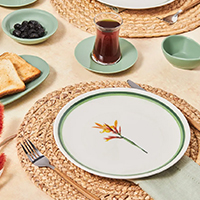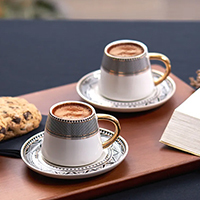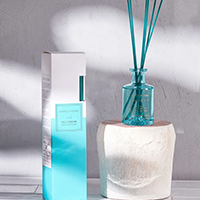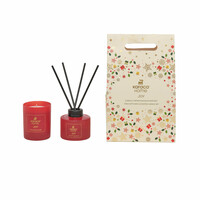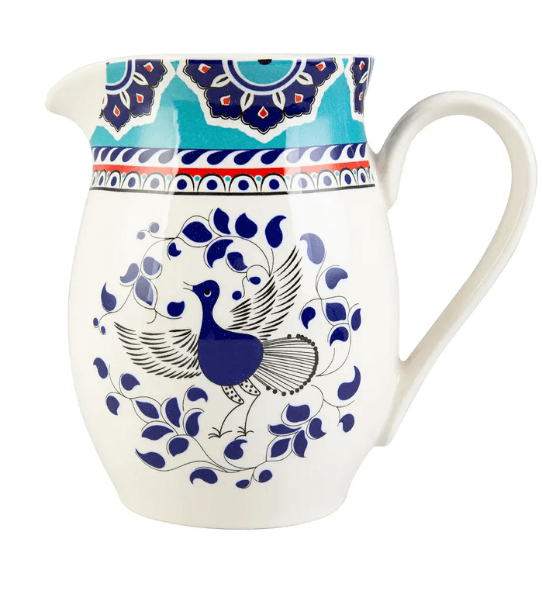THE STORY OF THE MAI COLLECTION
AND THE FOOD CULTURE OF THE
PERIOD
Turkish cuisine is a very special cuisine that has been
influenced by different cultures throughout history and
blends these influences with its own culture. Although
the Ottoman palace dishes are mostly visualized when
we say “Turkish cuisine”, the main basis of the Ottoman
cuisine is the Seljuk culture. Since the Ottoman Empire
had an understanding of keeping the cultural heritage of
those lands alive with the lands it conquered, it also
inherited the legacy of the largest state in the Anatolian
lands of the period, namely the Seljuks. Turkish cuisine
culture continued to live in the Ottoman Empire. As
Ömür Akkor stated, “Turkish cuisine is actually a culture
in itself. From Central Asia to the Balkans, Turkish
cuisine has been influential in every place where Turks
passed. Turkish cuisine is not just food, it is a culture.”
Karaca, who always works to add variety and character
to its product groups, has created the new Mai
Collection, this time nourished by Turkish traditions and
culinary heritage. It reunited 1000 years of Turkish
culture and culinary traditions with a modern
interpretation.
PRODUCT USE AND BENEFITS
Karaca Mai Collection, like the unique patterns on it, is
a special collection with the way it is produced. Mai
collection is produced not like the usual porcelain
production obtained by baking the dough at high
temperature, but with the special sub-glazing applied in
the world and the multi-colored printing technique
specific to this collection. In this technique, the patterns
are baked after being printed on the dough, and after a
special substance that gives shine to the surface is
applied, it is produced by baking again. Thus, patterns
that do not appear for a lifetime are obtained. Suitable
for dishwasher and microwave use.
According to the Greek Hermes, it is the source of youth
and beauty, the hope at the end of the road for the
famous traders of the Silk Road, and the representation
of immensity for those who adopt Buddha’s teachings in
India. Throughout history, the lotus flower has
fascinated those who see it with its beauty. It
symbolized eternity and abundance in the Turkish
society that migrated to Anatolia. This special plant,
which has meaning in every culture, has been a motif
that adorns tables and architectural works for 1000
years since the Anatolian Seljuk culture.
When it fell from heaven, it chose the fertile
Mesopotamian lands as its home. It was remembered
by those who saw it as a god of war, a symbol of fertility,
a sign of immortality and rebirth, an element that brings
happiness and luck, a symbol of sovereignty, wisdom,
wealth and nobility, a symbol of eternal life, heaven and
divine beauty. The noble societies of Mesopotamia,
which is its home, crowned the works they built with its
beauty throughout history.





